Air Way Or The Nitrogen Way?
- By Juili Eklahare
- March 05, 2023
We talk to industry spokespeople and end-users about using nitrogen tyres and air tyres, including their experiences, benefits, myths and more. Read on…
Air tyres are a reality. So are nitrogen tyres. Both have users and suppliers. And many have tried using the two, choosing one over the other. While air tyres are very common, nitrogen tyres are still rolling their way in. Yet there are those who swear by nitrogen tyres and those who could never leave an air tyre’s side.
Benefits experienced from nitrogen tyres
Sneha Phadke, a management generalist based in Pune, India, has been using nitrogen-inflated tyres for the past four years. “When I purchased my two-wheeler, both the tyres were inflated with regular air, which was how I used it for six months. However, a couple of people back then suggested that switching to nitrogen would be more beneficial in terms of the riding experience and prolonging the tyres’ good health,” Phadke recounts, sharing her first-hand experience. “After that, there weren’t frequent punctures, the deflation wasn’t as fast as it happens with regular air, and taking a turn with my two-wheeler is much more comfortable. Air somehow makes the scooter heavier for me to ride – it feels like carrying some extra weight.”
Phadke is of the opinion that as an end-user, there is a significantly distinct experience when one rides a gearless scooter with air-inflated tyres versus a gearless scooter with nitrogen-inflated tyres. However, much did not change in other aspects after moving to nitrogen. For instance, she did not have to invest in extra maintenance for her tyres.
Cost efficiency and trustworthiness
In Phadke’s experience, nitrogen to inflate her scooter’s tyres was easily available to her in Pune. In fact, she already knew four petrol pumps in Pune that provide nitrogen for tyre inflation. “The nitrogen inflation is free. As for the first-time nitrogen inflation, the deflation of air and nitrogen inflation was done at a very nominal cost of INR 20-25 for my scooter,” she says.
Phadke finds it safer to get her tyres inflated with nitrogen at reputed petrol pumps only. This is because she believes that the company staff is properly trained and takes care of all the factors when it comes to checking the tyres and refilling the tyres with nitrogen to the right capacity. “That makes it more cost-efficient, trustworthy and the tyres healthier,” she clarifies. “Plus, the meters at these petrol pumps check the amount of nitrogen in the tyres, which does not give me any reason to doubt the purity of the gas.”
Nitrogen tyres – not for everyone
Like Phadke, Anish Makoday, a BBA student, found the advantage of being able to turn a two-wheeler more smoothly upon switching to nitrogen tyres. “A friend had told me that nitrogen-inflated tyres provide great fuel efficiency. So as petrol prices spiked, I thought that switching to nitrogen would be a good option,” Makoday cites. “Besides, my friends also claimed that nitrogen keeps the tyres cool, and the heat from the road does not affect them much.”
But this was not to last long. “The initial cost for switching to nitrogen (deflation and then inflation) for my scooter was INR 100. I have found the rate of refilling per tyre to differ everywhere, although I have found it to be INR 30-40 at most places,” Makoday informs. “With nitrogen tyres, one does not need to refill their tyres frequently and can refill them twice a month. This led to me often not realising that my tyres were running out of nitrogen and needed refilling. Therefore, I would ride my bike without refilling the tyres for two to three months straight. This resulted in the tyres getting punctured a lot. Unlike nitrogen tyres, regular air tyres require refilling every two weeks, cost up to INR 10 per tyre and one usually tends to refill them immediately once they fill the vehicle’s petrol tank.”
Therefore, Makoday stuck to nitrogen tyres for six months before going back to regular air tyres last year, after facing issues with punctured tyres. Also, he claims that he didn’t experience much difference between the two, except a bit in terms of mileage.
Ikshwaku Deopathak, a musician by profession, too, bid goodbye to nitrogen tyres, one of the reasons being that finding nitrogen stations/pumps was difficult. Nitrogen tyres had also started getting costly for Deopathak. Refilling his car’s tyres with nitrogen cost him a total of INR 200 – that’s INR 50 per tyre. Refilling the tyres with air turned out to be much cheaper, being INR 10 per tyre, he avows.
Access to nitrogen
With the end-users’ different experiences of access to nitrogen for tyre refilling, we ask Amin Almel, CEO, Sunrise Instruments, to throw some light on this aspect. He apprises us that nitrogen refilling options are easily available in cities but can get difficult to access once one heads towards the outskirts and rural areas. “But as petrol pumps are showing up in different parts of the country, nitrogen filling is being made available there,” he states.
Ultimately, one has to take their discipline and riding/driving habits into account when considering moving over to the nitrogen side, Makoday believes. “If one checks and refills their tyres from time to time from the very beginning, unlike me, then nitrogen tyres might be for them,” he states. Sudershan Gusain, Sr DGM Technical Marketing and Standards and Regulations, Bridgestone India, informs that to derive the optimum benefit of nitrogen inflation, the percentage of nitrogen needs to be 95 percent or higher. However, topping up normal air in a nitrogen-inflated tyre once or twice is not known to have any negative impact on tyre life or tyre efficiency.
Nitrogen tyres – a gimmick?
Ravi Chandarana, Co-founder of Kwik Fix Auto, is also one who would not recommend rolling your tyres into the nitrogen territory. “The benefits that people experience through nitrogen tyres are psychological,” Chandarana tells us matter-of-factly. “Nitrogen has been commercialised by tyre shops and petrol stations in the Indian tyre sector. It’s a gimmick; when a tyre shop provides nitrogen for tyre inflation, it advises the end-user to use only nitrogen for their tyres from then on. Thus, the customer tends to keep going back to that respective tyre shop to inflate his/her tyres with nitrogen. That builds the tyre shop’s relation with the customer, and the customer then tends to always remember that particular tyre shop in the back of his/her head. This makes the customer go back to that specific tyre shop a majority of times for tyre inflation and any kind of tyre service.”
Further emphasising his point on how nitrogen is not necessary for tyres, Chandarana highlights that, unlike the availability of air for the same, not every tyre shop and petrol pump out there provides nitrogen for tyre inflation. “That goes to show that not every vehicle tyre is inflated with nitrogen,” he points out. “This further goes on to show that perhaps nitrogen is not that necessary to a tyre – like petrol is to a car. Otherwise, every driver/rider would be using it. If tomorrow nitrogen weren’t available for your tyres, your vehicle would not stop functioning.”
The myths of nitrogen tyres
As it turns out, Chandarana’s Kwik Fix Auto is a tyre dealer and also happens to be a nitrogen supplier for tyres to end-users. But the reason for supplying nitrogen to people’s tyres is solely because there is a demand for it, Chandarana states, but he certainly does not recommend it. He claims that there are several myths related to nitrogen tyres. “For one, people are often told that nitrogen makes their vehicles’ tyres cool. Secondly, it is believed by many that nitrogen tyres would increase their fuel efficiency. However, it’s not really possible to explain this to every customer who comes to me,” Chandarana elucidates.
Another myth related to nitrogen tyres is that once a tyre is inflated with nitrogen, it needs to be refilled with nitrogen alone in the future. Prajakta Jadhav, a teacher trainer who quit nitrogen tyres, claims she was told that inflating with regular air would damage these tyres. Thus, she shares that when she decided to go back to regular air tyres (because nitrogen was expensive for her), she had to wait till her car’s tyres wore out before she could get new ones and inflate them with regular air.
Almel begs to differ with this theory. He clarifies, “If one of your tyres punctures in an emergency situation where you have no access to nitrogen but only air, you can always refill the punctured tyre with air. As long as the pressure is the same, you can drive a vehicle where one tyre may have nitrogen while another may have regular air.”
Digital inflation
Chandarana happens to see one comforting prospect in inflating tyres with nitrogen. That is, nitrogen is inflated into tyres digitally. With digital inflation, one gets the accurate air pressure for their tyres as opposed to analogue meters, which are not properly calibrated, he enlightens.
Using nitrogen tyres in coastal areas
With this one silver lining, Chandarana wouldn’t mind looking favourably on nitrogen tyres, but only from a geographical point of view. He proposes to use nitrogen tyres if one lives in coastal areas. Explaining why, he tells us, “The air in coastal areas is salted. This results in the tyres’ rims getting rusted because of the salted air. In a scenario like this, the nitrogen machine eliminates these gases and inflates the tyres with nitrogen. Otherwise, it doesn’t matter if your tyres have air or nitrogen; what matters is the accurate air pressure.”
Nitrogen quality
In spite of it all, if an end-user still wishes to go for nitrogen tyres (if not living in a coastal area), then it’s important to make sure that the nitrogen is being supplied by a reputed brand,” Chandarana adds. “Secondly, one should make sure that the environment in which the tyre is being inflated has clean air. This is because with polluted air around, one will not get nitrogen of good quality for their tyres.” Gusain adds that using a nitrogen generator to inflate tyres will have better results. “However, the method to inflate is also important,” he says. “If the fitter tops up in a tyre is already inflated with normal air, then that's the wrong way to go. The right way is to deflate the tyre and remove the residual air before inflating it with nitrogen.”
Speaking of nitrogen quality, Basant Nayar, an Associate Director at a financial services firm and who uses nitrogen tyres, always checks the online reviews and ratings of a tyre shop before visiting it. However, Nayar states that one can’t really judge the nitrogen machine.
Tyre tronics to the rescue
While Nayar checks online reviews for the right tyre shop, Karl Pereira, an entrepreneur and nitrogen tyre user, has been refilling his tyres with nitrogen at the same petrol station for the past 17 years. That’s because his car comes with tyre tronics that show the tyres’ pressure and whether the tyres are fine or not. “Once I have refilled my car’s tyres with nitrogen and checked the pressure, I don’t need to refill them for at least a year, or sometimes more, unless the software tells me that there’s something wrong with them,” Pereira tells us.
Why nitrogen tyres matter
Where there’s a demand, there’s supply. And there certainly seems to be a demand for nitrogen in tyres, even if not everyone is opting for it. However, Gusain is of the opinion that choosing between air or nitrogen depends on the need of the consumer and the usage of tyres. Nitrogen has less than half permeability as compared to normal air, which makes nitrogen inflation last longer. However, it is noteworthy that to get the best results, one must continue to inflate at similar frequencies and not have very long gaps.
He further informs, “Nitrogen also has other benefits such as less corrosion of steel wheel and tyre components. In fact, if a commercial truck or bus fleets use retreads, then nitrogen inflation becomes even more important. Besides, it is a more sustainable option as it leads to lesser CO2 emissions. However, it is also the costlier option. So it’s a choice that consumers can make, depending on their preference." Gusain also states that nitrogen inflation is expensive not because of the benefits it offers, but because of the process of using special filters and machines for extraction.
Almel opines that the popularity of the benefits of nitrogen-inflated tyres is being realised by the end-user today. Sunrise Instruments, a manufacturer of nitrogen tyre inflator machines (which act as a filter, separating oxygen and nitrogen), sees clients from tyre shops, petrol stations and dealers from tyre companies like Goodyear, Bridgestone, CEAT and Michelin, Almel tells us. People’s awareness also largely depends on where they choose to inflate their tyres on a regular basis. Well-trained tyre professionals surely educate their customers about the benefits of nitrogen inflation.
Accentuating the expanding market scenario of nitrogen tyres across the world, Almel shares that his company’s nitrogen tyre inflator machines are even exported to UAE and Saudi Arabia. He further points out why nitrogen tyres matter. He posits that being an inert gas, nitrogen does not react. Therefore, there is no reaction with the rubber and metal parts in the tyres. “This extends the tyres’ life,” he goes on to explain. “Additionally, it’s important for the tyre pressure to remain stable as per the vehicle manufacturer’s guideline. This will, in the long run, lead to better fuel mileage, better control of the vehicle and comfort while driving/riding the vehicle. And with nitrogen tyres, the tyre pressure remains stable for a longer period of time, giving you all of this.”
Regular air, on the other hand, contains 21 percent of oxygen, which tends to react and deteriorate the tyre quality, according to Almel. Nitrogen tyres have only 1 percent of other gases and 99 percent of nitrogen itself, which is dry nitrogen.
When asked about the opinion from the other side of the table, Almel avers that if nitrogen hadn’t been important to tyres, then it wouldn’t have been used in aircraft tyres and race car tyres. “And the cars driven on Indian highways are no less than a race car, given their speed,” he puts across. “People have limited time today and are constantly in a rush. These aspects make it important to have nitrogen-inflated tyres in order to have a maintained tyre pressure and to drive safely.”
A subjective choice
Whether a nitrogen tyre works best or an air tyre does, it really comes down to personal experience. Even if not recommended by many, nitrogen tyres do not appear to cause any harm. But our vehicles would be nowhere without tyres (literally), and they certainly are one of the most significant components of our vehicles. If our tyres aren’t right or the pressure has gone wrong, it could endanger a life. Therefore, while one picks a tyre that works best for them, looking at the big picture, it needs to work in every aspect – from cost to convenience to safety. After all, if vehicles can be subjective, why can’t tyres?
MAXAM To Showcase Agritech Innovations At Agritechnica 2025
- By TT News
- November 05, 2025
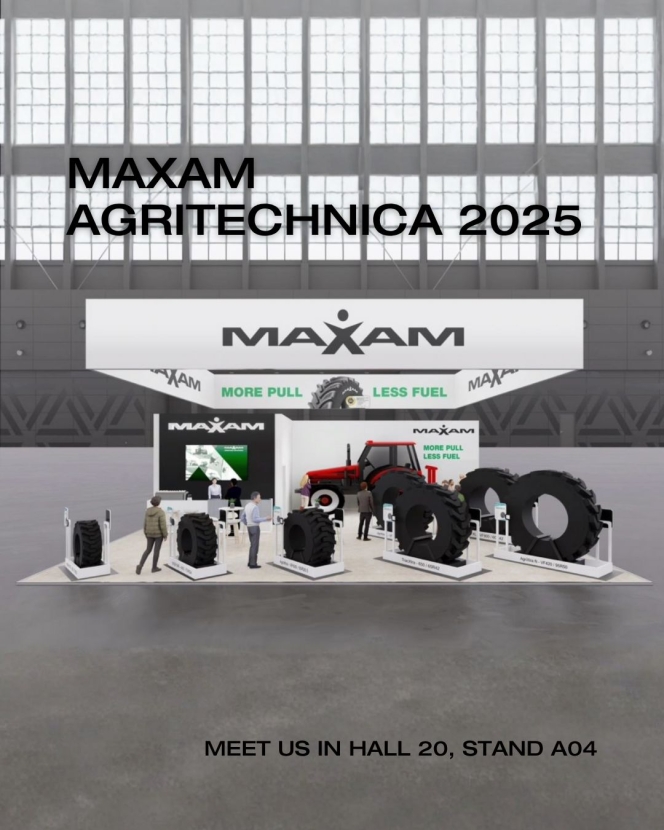
MAXAM is set to showcase its advanced agricultural tyre solutions at Agritechnica 2025 in Hannover from 9 to 15 November. Visitors can find the company at Stand A04 in Hall 20, where the exhibition theme ‘More Pull. Less Fuel’ will guide the presentation. This philosophy underscores the company's dedication to developing tyres that enhance operational efficiency and contribute to more sustainable farming practices by reducing fuel consumption and soil compaction. The event provides a significant opportunity for MAXAM to demonstrate its commitment to innovation and the expansion of its product portfolio.
On display will be a range of DLG-awarded tyres, including robust models for high-horsepower tractors and versatile options for specialised implements, illustrating the company's technical breadth. Beyond presenting products, MAXAM considers the trade fair a vital meeting point for industry collaboration. It serves as a platform for direct engagement with farmers, partners and machine manufacturers, whose feedback provides invaluable, real-world insights that directly influence the future direction of product and service development, ensuring they remain precisely aligned with evolving market needs.
As a part of SAILUN Group, one of the 10 largest tyre manufacturers in the world, MAXAM leverages its extensive international presence and collaborative research initiatives to drive continuous innovation. The company is dedicated to advancing agricultural tyre technology, creating sophisticated solutions that directly address the evolving demands of modern farming. This focus encompasses critical areas such as enhanced sustainability, improved cost-efficiency and superior field performance.
Radar Tires Expands Us Footprint With Two New Distribution Centres
- By TT News
- November 05, 2025
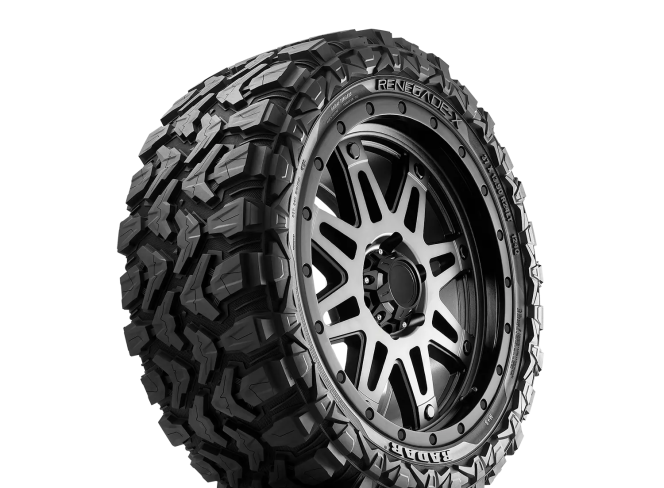
Radar Tires has expanded its US distribution network with the opening of two new domestic distribution centres in Knoxville, Tennessee, and Parkesburg, Pennsylvania, as part of efforts to strengthen product accessibility and service reliability for its growing customer base.
The expansion increases the brand’s domestic distribution centres from one to three. It aims to improve delivery efficiency and inventory availability across key regions, particularly in the Southeast and Northeast of the United States.
“Stocking domestic tyre inventory is a key part of the Radar strategy going forward,” said Rob Montasser, Vice President of Sales for Radar Tires, USA. “It ensures our distributors and retailers have easy access to the products that their customers need, without the long lead times or supply chain uncertainty. These new locations allow us to be faster, more flexible, and more dependable.”
The company said the additional facilities will reduce delivery times and ensure that its core product range remains readily available to meet rising market demand.
With existing operations in Texas, the addition of centres in Tennessee and Pennsylvania underscores Radar Tires’ long-term strategy to enhance supply chain responsiveness and reinforce its position as one of the most customer-focused distribution networks in the tyre industry.
Cabot Corp Posts Lower Quarterly Profit, Sees Subdued Demand Outlook For Fiscal 2026
- By TT News
- November 05, 2025

Cabot Corporation reported lower quarterly earnings, as weaker demand in its Reinforcement Materials segment and softer volumes in Performance Chemicals weighed on results. However, the company ended fiscal 2025 with solid cash flow and continued shareholder returns.
For the fourth quarter ended 30 September, Cabot posted net income of USD 43 million, or USD 0.79 per share, compared with USD 137 million, or USD 2.43 per share, in the same period a year earlier.
Full-year diluted earnings per share were USD 6.02, while adjusted earnings per share rose 3 percent year-on-year to USD 7.25.
“I am very pleased with another strong year of Adjusted EPS growth where we achieved USD 7.25, up 3 percent year over year, in a year with a challenging macroeconomic backdrop,” said Sean Keohane, Cabot’s President and Chief Executive Officer. “This performance was driven by higher EBIT in our Performance Chemicals segment, which increased 18 percent year over year, partially offset by EBIT in our Reinforcement Materials segment, which declined 5 percent.”
Cabot’s revenue for the quarter fell to USD 899 million from USD 1.0 billion a year earlier, while full-year sales declined to USD 3.7 billion from USD 4.0 billion.
The Boston-based speciality chemicals manufacturer said fourth-quarter cash flow from operations totalled USD 219 million, enabling USD 64 million in shareholder returns through dividends and share buybacks. For the full fiscal year, Cabot generated USD 665 million in operating cash flow, funding USD 274 million in capital investments, USD 96 million in dividend payments and USD 168 million in share repurchases.
Keohane said the company’s balance sheet remained strong, with a net debt-to-EBITDA ratio of 1.2 times, providing flexibility to invest in growth while continuing to return capital to shareholders.
The company’s Reinforcement Materials segment reported a USD 4 million decline in EBIT from the prior-year quarter, reflecting lower volumes in the Americas and Asia Pacific, partly offset by cost efficiencies. Global volumes fell 5 percent, including a 7 percent drop in the Americas, where lower tyre production by customers was attributed to increased Asian tyre imports.
Performance Chemicals EBIT decreased USD 2 million year-over-year, mainly due to a 5 percent drop in volumes led by weaker demand in Europe, particularly from construction-related applications.
Cabot ended the quarter with percent 258 million in cash and spent percent 64 million on capital expenditures. The company recorded a 55 percent effective tax rate in the fourth quarter and an operating tax rate of 27 percent for fiscal 2025.
Looking ahead, Keohane cautioned that market conditions remain challenging, particularly in the Reinforcement Materials sector. “We do not yet see signs of improvement in the external environment, particularly as it relates to regional demand trends in Reinforcement Materials due to the impact of elevated Asian tire imports into western regions,” he said.
The company anticipates improvement in Performance Chemicals, led by growth in battery materials and infrastructure-related applications, while maintaining strong cash flow to support investment and shareholder returns.
“While market conditions remain challenging, we continue to execute on our foundation of commercial and operational excellence, and we remain focused on managing costs, strengthening operations, and positioning the company for long-term growth,” Keohane said.
In fiscal 2025, Cabot also announced an agreement to acquire Bridgestone Corporation’s reinforcing carbons plant in Mexico and released its 2024 Sustainability Report, noting it had achieved 11 of its 15 sustainability goals ahead of schedule and established new 2030 targets.
wdk Hails 'Berlin Declaration' As Vital For German Industry And Jobs
- By TT News
- November 05, 2025

The German Rubber Industry Association (wdk) has responded positively to the 'Berlin Declaration’, characterising it as an essential and long-awaited political signal. From the wdk's perspective, the declaration represents a crucial commitment from the ‘Friends of Industry’ to bolster the manufacturing sector, which is fundamental to preserving Germany's industrial core and the multitude of upstream and downstream jobs it sustains. The association's Managing Director, Boris Engelhardt, emphasised that this initiative correctly identifies the urgent need for Europe to recognise and champion industrial value creation.
The wdk finds it particularly significant that the impetus for this declaration originated from a coalition of 17 member states, a fact that underscores a shared political priority independent of the EU Commission's agenda. While the declaration's broad framework allows for various interpretations, the wdk has identified the reduction of bureaucratic burdens as its paramount objective. On this specific point, the association reports being in complete alignment with Federal Minister for Economic Affairs Katherina Reiche. The wdk now asserts that the true measure of the declaration's success will lie in its translation from a political statement into actionable policy, urging the addressed EU institutions to move beyond acknowledgment and proceed with swift and decisive implementation.


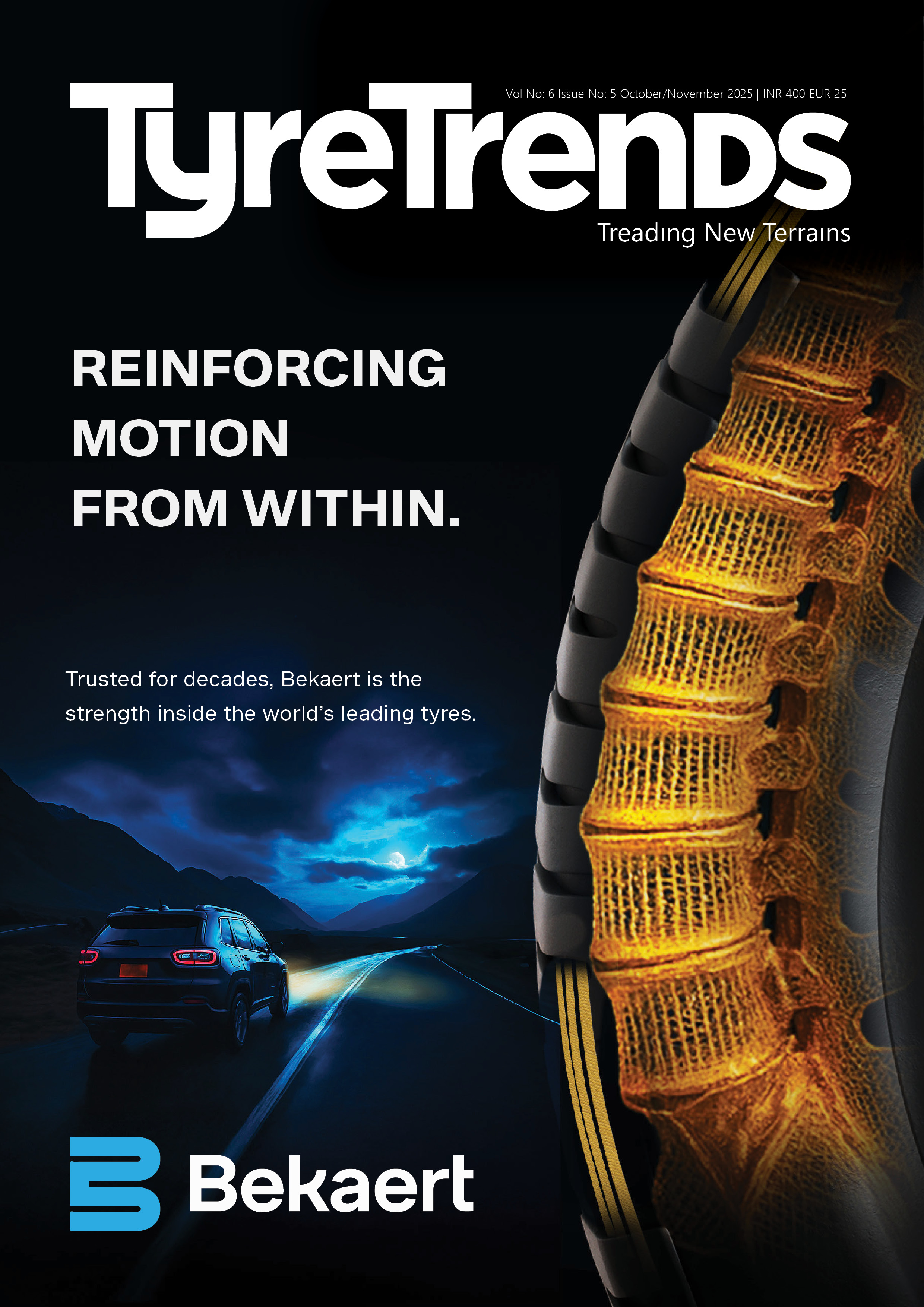
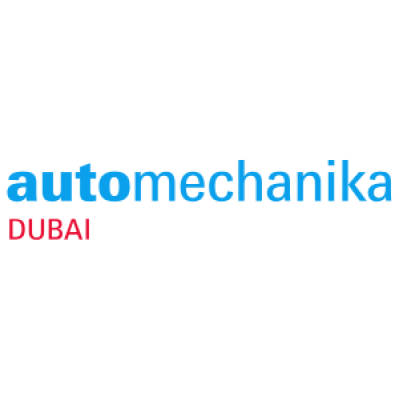


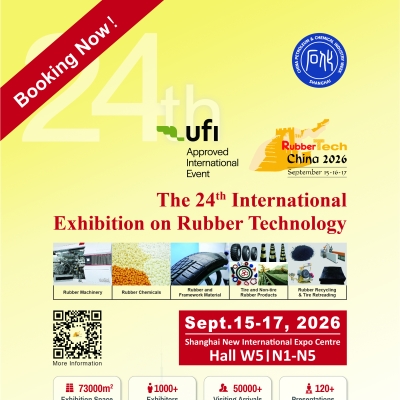
Comments (0)
ADD COMMENT